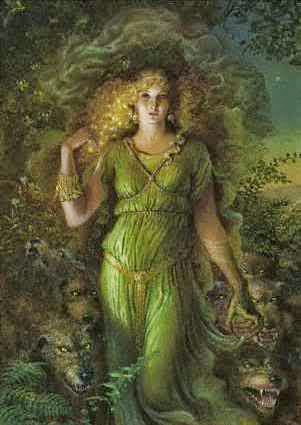The Custom of Burying Grave-Goods with the Dead, or Slaying Wife or Slaves on the Tomb
The custom of burying grave-goods with the dead, or slaying wife or slaves on the tomb, does not necessarily point to a cult of the dead, yet when such practices survive over a long period they assume the form of a cult. These customs flourished among the Celts, and, taken in connection with the reverence for the sepulchres of the dead, they point to a worship of ancestral spirits as well as of great departed heroes. Heads of the slain were offered to the "strong shades"—the ghosts of tribal heroes whose praises were sung by bards. When such heads were placed on houses, they may have been devoted to the family ghosts. The honour in which mythic or real heroes were held may point to an actual cult, the hero being worshipped when dead, while he still continued his guardianship of the tribe. We know also that the tomb of King Cottius in the Alps was a sacred place, that Irish kings were often inaugurated on ancestral burial cairns, and that Irish gods were associated with barrows of the dead
The custom of burying grave-goods with the dead, or slaying wife or slaves on the tomb, does not necessarily point to a cult of the dead, yet when such practices survive over a long period they assume the form of a cult. These customs flourished among the Celts, and, taken in connection with the reverence for the sepulchres of the dead, they point to a worship of ancestral spirits as well as of great departed heroes. Heads of the slain were offered to the "strong shades"—the ghosts of tribal heroes whose praises were sung by bards. When such heads were placed on houses, they may have been devoted to the family ghosts. The honour in which mythic or real heroes were held may point to an actual cult, the hero being worshipped when dead, while he still continued his guardianship of the tribe. We know also that the tomb of King Cottius in the Alps was a sacred place, that Irish kings were often inaugurated on ancestral burial cairns, and that Irish gods were associated with barrows of the dead





